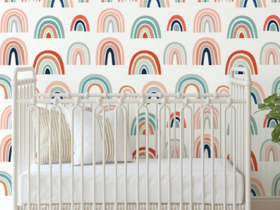In the realm of enigmatic spaces, there exists a peculiar conundrum – a room with no windows or doors. This intriguing mystery has captivated minds and sparked endless speculation. In this comprehensive exploration, we delve into the depths of this enigma, seeking to unravel its secrets and shed light on the fascination that surrounds it.
The Architecture of Mystery
What Defines a Room?
Before delving into the windowless, doorless anomaly, it’s crucial to understand the basic elements of a room. Traditionally, a room is characterized by its enclosure, often delineated by walls and accessed through doors and windows. These openings serve as points of entry, providing both ventilation and natural light.
A Peculiar Exception
Contrary to conventional architectural norms, the room in question challenges our preconceived notions. It stands as a testament to the unexpected, an outlier in the world of design. Devoid of the customary openings, it prompts us to reconsider the very essence of what constitutes a room.
Theories and Speculations
The Invisible Portal Hypothesis
One prevailing theory suggests the existence of an invisible portal, an imperceptible gateway that allows entry without the need for physical doors or windows. Proponents of this idea propose that such portals might operate on a wavelength beyond human perception, creating an unseen passage into the mysterious room.
Quantum Dimensions Unveiled
Venturing into the realm of quantum physics, another hypothesis proposes the existence of parallel dimensions intersecting within the confines of this peculiar space. In these alternate realms, traditional architectural features may differ, leading to the creation of a room seemingly devoid of conventional openings.
Historical Instances
Ancient Enigmas
Throughout history, instances of rooms lacking windows or doors have emerged in various cultures. Ancient civilizations, such as the Egyptians and Mayans, incorporated such structures into their architectural designs, often attributing them to religious or mystical significance. Uncovering these historical parallels adds a layer of depth to the ongoing mystery.
Modern Interpretations
Architectural Innovations
In the contemporary world, architects and designers have embraced the challenge posed by the room with no windows or doors. Exploring innovative approaches, they have experimented with unconventional materials and spatial configurations to create visually striking yet functionally enigmatic spaces.
Minimalism and Beyond
Within the realm of interior design, the minimalist movement has embraced the concept of simplicity, often leading to spaces with unadorned surfaces and discreet entrances. While not entirely mirroring the windowless, doorless room, these designs offer a modern perspective on spatial limitations and possibilities.
The Allure of the Unseen
Psychological Fascination
Human psychology plays a pivotal role in our fascination with the room in question. The absence of traditional entry points triggers our innate curiosity, prompting a desire to explore the unknown. This psychological allure contributes to the enduring appeal of spaces that defy conventional expectations.
FAQs Section
A room devoid of both doors and windows falls into the category of unconventional spaces. This unique architectural anomaly challenges traditional norms and sparks curiosity, prompting a reevaluation of our preconceived notions about room design.
A room without windows is commonly referred to as a windowless room. This distinctive feature can evoke a range of emotions and responses due to its departure from the typical architectural blueprint.
A room without doors and walls might be described as an open space or an unenclosed area. This unconventional layout defies the conventional definition of a room, inviting contemplation on the essence of spatial design.
Various types of rooms may lack windows for different reasons. Utility rooms, storage spaces, or certain specialized facilities might be designed without windows to fulfill specific functional requirements. Additionally, in modern architectural trends, minimalist designs may incorporate windowless rooms for aesthetic reasons.
The safety of living in a room without windows depends on several factors, including the purpose of the space, ventilation systems in place, and adherence to building codes. While some utility rooms or secure facilities may be designed without windows for practical reasons, residential spaces without windows can pose challenges related to natural light and air circulation. It is essential to consider the intended use and adhere to safety standards when evaluating the habitability of such spaces.
Conclusion
In the pursuit of understanding the room with no windows or doors, we find ourselves immersed in a tapestry of theories, historical echoes, and modern interpretations. The allure of the unseen, coupled with architectural innovations, propels this mystery into the realms of both science and art. As we navigate the corridors of speculation, one thing remains certain – the fascination with the enigmatic room endures, inviting us to ponder the boundaries of design and the mysteries that lie beyond.












Find Us on Socials